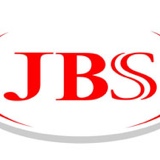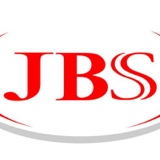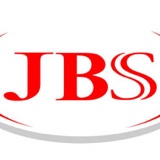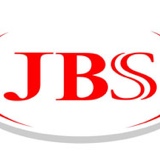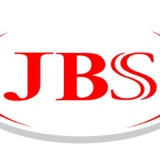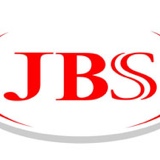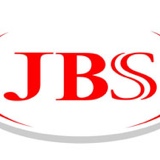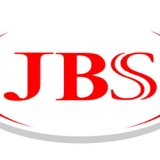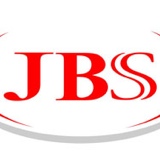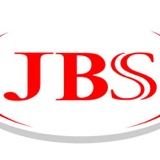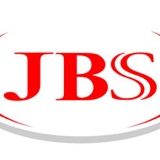Information
-
Auditor Name:
-
Area Supervisor Name:
-
Area Inspected:
- Fab
- MTC Shop
- Shipping Cooler
- Slaughter
- Supply
- Viscera Side
- Wool Side
- Other
-
Conducted on
Audit
Guidelines
-
Operations Leadership Periodic Safety Inspection Form - Guidelines
1) Machine/Equipment Guarding: Are all machine guards in place and firmly attached. The guard should not create an added hazard to the employee. The guard must completely cover the point of operation or hazard. These are points of operation. The rule of thumb is that if you can place a 1/4" straw in the point of operation and it is able to be caught in the point of operation, it must be guarded.
2) Drain Covers: Are the drain covers in place, fit properly and are they in good repair (condition)?
3) Switches / Disconnects: Are all equipment switches, light switches, intact, operational and in good repair. Are equipment disconnects labeled as to their purpose, have a lockout procedure attached (where required), are the disconnects secured to the wall or equipment and free from material defects (rust, latches and handles)
4) Emergency Stop Switches and Devices: Are Emergency Stop switches intact, operational, intact and labeled. Are Emergency Stop Switches located in areas to facilitate easy access? Are Emergency Pull Cords operational?
5) Saws and Power Equipment: Are all guards on the meat cutting saws. There should be a local on/off switch or disconnect within reach of the operator. Is the saw blade guard as low as possible considering the product being made? Are all power tools and equipment in good working order, no exposed wires, functional switches, and guards in place? Power tools used in a wet or damp environment must have a GFCI attachment or be plugged into a GFCI outlet.
6) Limit/Proximity Switches: Are the limit switches being bypassed? Check elevators, hand saws, dual trigger equipment, etc. Are all switches and devices should be in good repair and in working condition?
7) Control/electrical Panels: Are all the doors closed and that those in processing areas are water tight? Are all the blanks and knockouts filled and strain relief devices in place and secure? Is access limited to qualified persons? Check to make sure nothing is stored in the cabinet and that all inner and outer face plates are in place and secure.
8) Employee Work Stations: Is the employee's workstation in good repair and at a proper height to facilitate good body mechanics? Are ergonomic stands in place and properly adjusted? Is employee reach acceptable? How is housekeeping in the area? Do employees have sufficient room and lighting to safely perform their job? Finally, do all employees have the ability to exit the work area in case of emergency?
9) Tools: Are the tools sharp and is the right tool is being used for the task being performed? Are on-line sharpeners are available and a replacement schedule is being followed? Is the storage of the tool handled safely and that sufficient tools are available for employee needs?
10) Safety Chains/Cables: is there a secondary safety cable/chain on overhead equipment? Check to ensure that the chain/cable is securely in place, connected to a secondary location on the equipment and beam or trolley (i.e. Balancers and whizard motors)
11) Stairs, Railings, Guardrails: Are the stairs reasonably slip resistant. The rise and tread must be uniformly spaced. Stair angle must be between 30 and 50 degrees. A handrail must be on all open sides of the stairs that have 4 or more risers. Guardrails must be provided for all elevated surfaces 4 feet or higher. It must be 42 inches high with a mid-rail and a toe board.
12) Conveyors / Augers: All rubber belt and plastic interlock conveyors should be visually inspected for wear or hazards. All areas in which employees are required to pass under a conveyor must be guarded. Augers must be fully enclosed by some form of guarding to prevent employees from gaining access during operation.
13) Outlets / Attachment Power Cords (SO cords): Do electrical outlets in the production areas have a self-closing cover with a rubber gasket. All attachment power cords must be free from defects such as splices and or taping or exposed wires. Portable power tools should be equipped with a ground fault interrupter. All cords must be kept out of pathways.
14) S/O Cords: S/O cord should be noted on the audit for further review and application. S/O cords are not permitted to be wrapped around conductive material such as conduit.
15) Aisle way and Exit Routes: Are all Aisle ways free from obstruction and as far as possible clean and dry. All exits and ways of exits must be free from obstructions and obstacles. No exit shall be locked or blocked. All exit paths should be readably marked to facilitate easy exit in the case of an emergency. Are all safety signs legible and communicated in the facility language(s). Are exit signs, emergency evacuation arrows and maps posted in the work area?
16) Emergency and Exit Lighting: Are lights and signs working? Are they visible and in good repair? Are they appropriate for the location (dust-tight, water-tight, etc.)? Is the route to, through and away from the means of egress lit?
17) Fire Extinguishers in Place and Fully Charged: All fire extinguishers required in the area are in place, fully charge and corrosion free? Is each extinguisher tagged and inspected, with the pin in place? Is the fire extinguisher labeled and placed in an unobstructed location?
18) Eyewash/Drench showers: Are emergency eye wash sinks and showers positioned in areas that have a potential for eye injury such as chemicals being used in the area. Do all eye wash sinks and showers work properly? Is there a potential for the water to freeze if so, is a device installed to prevent freezing. Are all eye wash sinks and showers unobstructed? Is a sign or placard identifying its location above the sink or shower?
19) Housekeeping, Floors, Work Areas: Is there any obstacles, material or substances that create or pose a hazard for employees walking or working in the area. Examples such as, product on the floor, fat, blood or material inappropriate stored or placed in the area?
20) Additional Comments / Remarks: List any other hazard or area of concern noted during the audit process
TNG - Touch N Go's are to be utilized for the one on one contact with employees. They should follow the FELT process in looking at:
* Reaction of People - Self- Correct/Adjusting Equipment; Focused on Task; Aware of Surroundings
* Body Mechanics/ Positions - Sources of Mechanical Hazards (Point of Operations, Pinch Points); Contact with Temperatures Extremes; Lifting; Reaching (Over Reaching); Pulling/Pushing; Bending/Twisting; Awkward Positions; Throwing
* Working Stations - Stand Height; Elevated Cutting Station; Spacing of Employees; Stacked off Product
* Knife/Tool Handling - Proper Selection of Tools; Proper Use of Tools (knives, hooks, mtc equipment, etc); Well Maintained Tools; Spearing Product; Knife Placement; Number of Knives in Scabbard; Walking and Steeling Knives
* Procedures - Lock out / Tagout; Chemical Usage (including labeling); Permits (Confined Space, Line Break, Hot Work); Electrical; Powered Industrial Truck; Emergency Stop Buttons / Pull Cords Accessible
* Orderliness Standards - General Housekeeping; Slip/Trip/Fall Hazards (hoses, drain covers, tables, racks, etc); Blocked Egress -
I have read the above guidelines for the leadership safety inspection form
Hazard Category
-
1. Machine/Equipment guarding, in place?
-
Deficiencies & Corrective Action:
-
2. Drain covers, in place?
-
Deficiencies & Corrective Action:
-
3. Equipment switches and disconnects intact, operational and in good repair?
-
Deficiencies & Corrective Action:
-
4. Emergency stop buttons/controls working properly?
-
Deficiencies & Corrective Action:
-
5. Saws/Power Equipment operating in a safe condition
-
Deficiencies & Corrective Action:
-
6. Limit/proximity switches working properly?
-
Deficiencies & Corrective Action:
-
7. Control/electrical panels closed and latched?
-
Deficiencies & Corrective Action:
-
8. Employee work stations in good repair and properly set-up?
-
Deficiencies & Corrective Action:
-
9. Tools (knives/scissors) in good condition & properly staged or stored?
-
Deficiencies & Corrective Action:
-
10. Safety Chains/Cables on overhead equipment (whizard motors, balancers, etc)
-
Deficiencies & Corrective Action:
-
11. Stairs, railings, and guardrails in good condition?
-
Deficiencies & Corrective Action:
-
12. Conveyors/Augers operating in a safe condition?
-
Deficiencies & Corrective Action:
-
13. Outlets have a self-closing cover with rubber gasket?
-
Deficiencies & Corrective Action:
-
14. S/O cords wrapped around any conductive material?
-
Deficiencies & Corrective Action:
-
15. Egress routes unobstructed?
-
Deficiencies & Corrective Action:
-
16. Emergency and exit lighting in working order?
-
Deficiencies & Corrective Action:
-
17. Fire extinguishers in place and fully charged?
-
Deficiencies & Corrective Action:
-
18. Eyewash/drench showers in place and in good repair?
-
Deficiencies & Corrective Action:
-
19. Housekeeping acceptable?
-
Deficiencies & Corrective Action:
-
20. Any other unsafe conditions which may pose a hazard to our employees?
-
Deficiencies & Corrective Action:
Verification - Touch N Go Employee Contacts
-
TNG - Touch N Go's are to be utilized for the one on one contact with employees. They should follow the felt process in looking at:
* Reaction of People - Self- Correct/Adjusting Equipment; Focused on Task; Aware of Surroundings
* Body Mechanics/ Positions - Sources of Mechanical Hazards (Point of Operations, Pinch Points); Contact with Temperatures Extremes; Lifting; Reaching (Over Reaching); Pulling/Pushing; Bending/ Twisting; Awkward Positions; Throwing
* Working Stations - Stand Height; Elevated Cutting Station; Spacing of Employees; Stacked off Product
* Knife/Tool Handling - Proper Selection of Tools; Proper Use of Tools (knives, hooks, mtc equipment, etc); Well Maintained Tools; Spearing Product; Knife Placement; Number of Knives in Scabbard; Walking and Steeling Knives
* Procedures - Lock out / Tagout; Chemical Usage (including labeling); Permits (Confined Space, Line Break, Hot Work); Electrical; Powered Industrial Truck; Emergency Stop Buttons / Pull Cords Accessible
* Orderliness Standards - General Housekeeping; Slip/Trip/Fall Hazards (hoses, drain covers, tables, racks, etc); Blocked Egress -
TNG with employees?
Employee
-
Employees Name:
-
Topic Discussed
Information
Sign Off:
-
Auditor Signature:
-
Select date
-
Area Supervisor Signature:
-
Select date
